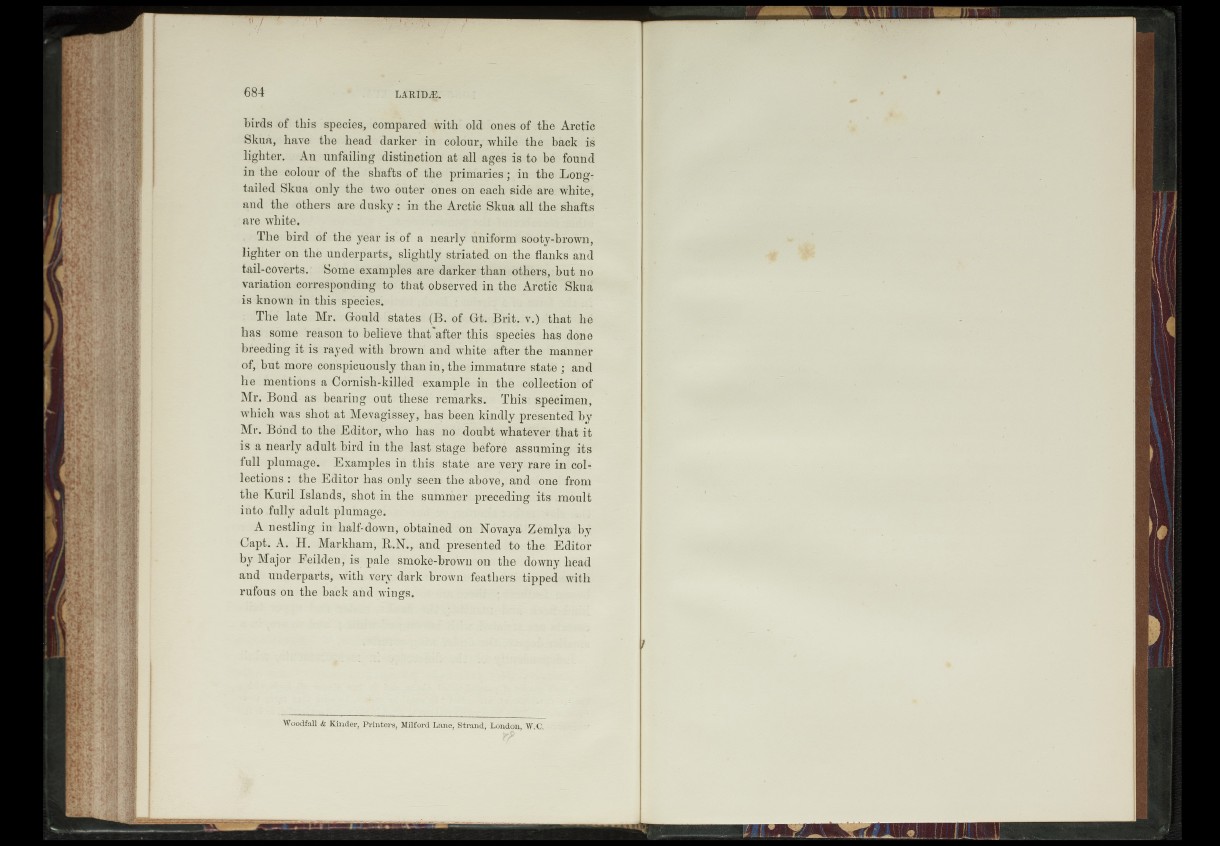
birds of this species, compared with' old ones of the Arctic
Skua, have the head darker in colour,' while the back is
lighter* An unfailing distinction at all ages is to bé found
in the coloùr of the shafts of the primaries,; in the Longtailed
Skua only the two outer ones on each side are. whitè^
and the others are dusky : in the Arctic Skua all the shafts
are white, s
• The bird of the year is of a nearly uniform sooty-brown,
lighter on the underparts, slightly striated on the flanks and
tail-coverts.: Some examples are darker than others,;but no
variation corresponding to that observed in the Arctic'"Skua
is known in this - species,
i The late Mr. Gould states (B. of jBHt..,v.) that he
has some reason to believe that'after this species has done
breeding it is rayed with brown and white after the manner
of, but more conspicuously than inythe immature state ; and
he mentions a Cornish-killed example- in the collection1 of
Mr. Bond as bearing .out these-' remarks. This: spécimen,
Which was shot at Mevagissey, has been kindly presented by
Mr. Bond to the Editor, who has no doubt whatever that it
is a nearly adult bird in the last stage béforé assuming its
full plumage, f Examples in this staté .are very rare in cob
lections ; the Editor has only seen the above,, and one from
the Kuril Islands, shot, in the summer .preceding'its moult
into .fully adult, plumage.
A nestling in half-down, obtained on -Nôvaya Zèmlya by
Gapt. A. H. Markham, R.NV and presented to the Editor
by Major Feilden,- is pale smoke-brown on the downy head
and ; underparts, with very dark -brown feathers tipped with
rufous on the back and wings.
Woodfall & Kinder, Printers, Milford Lane, Strand, London, W.CX